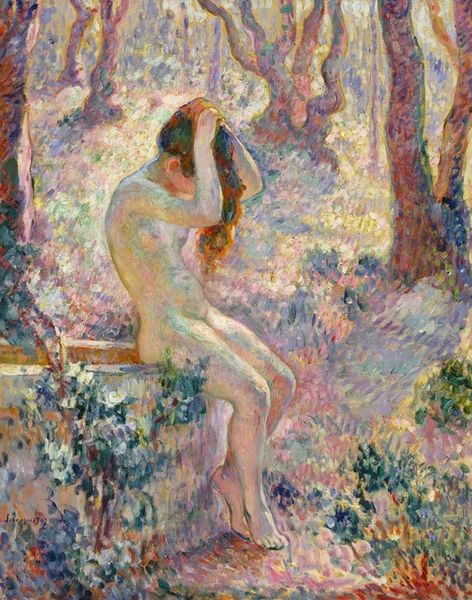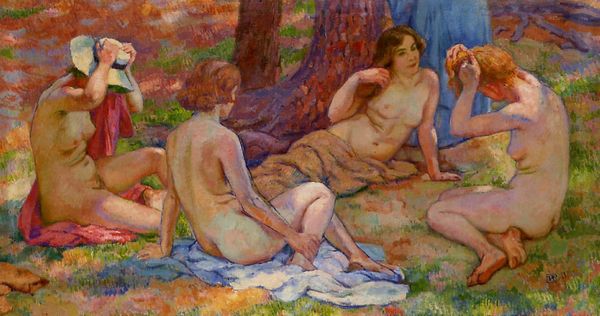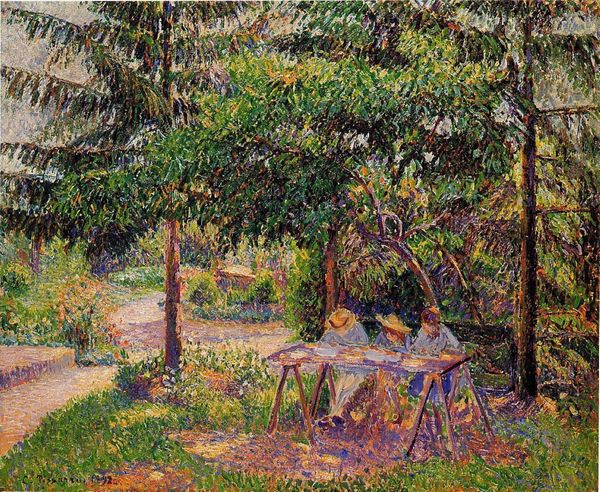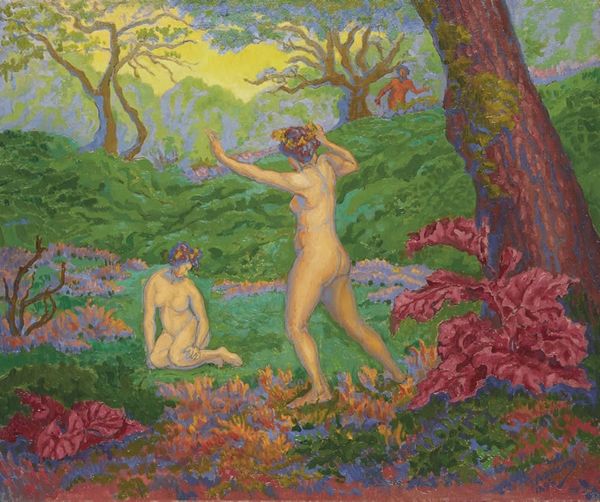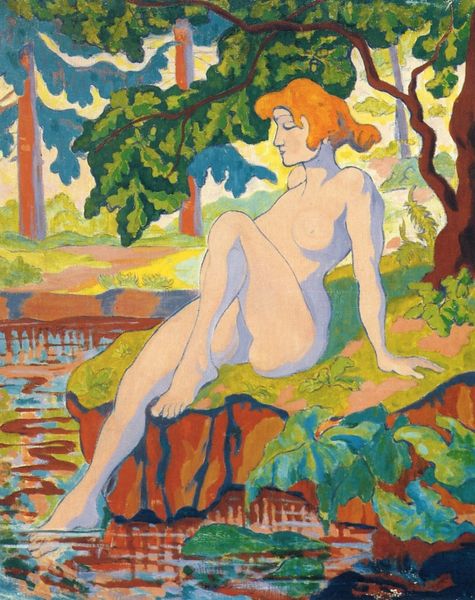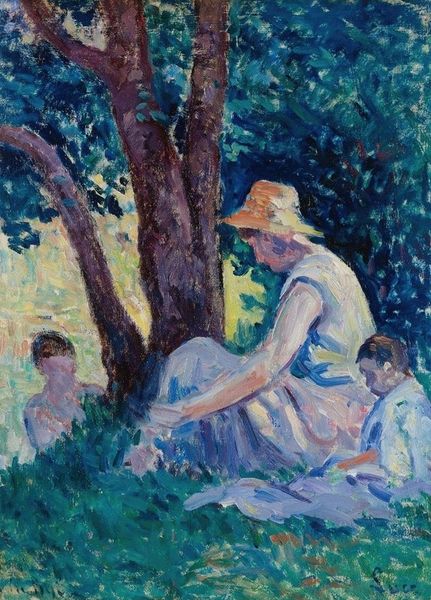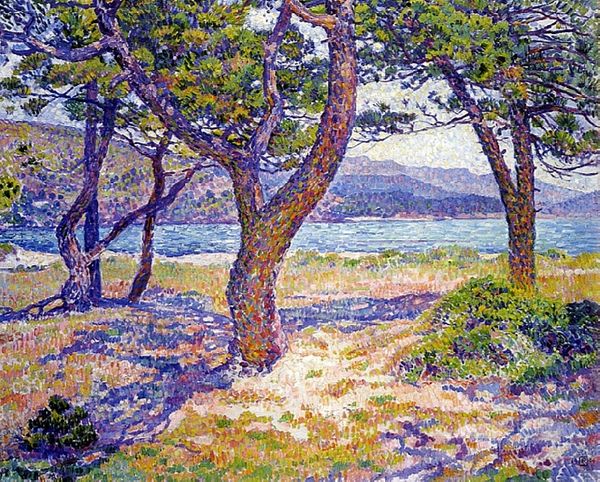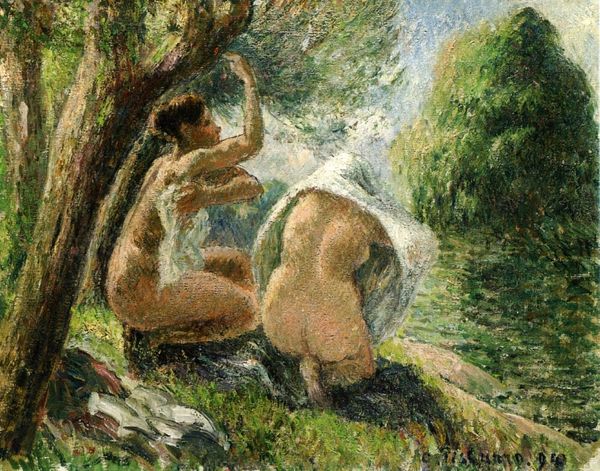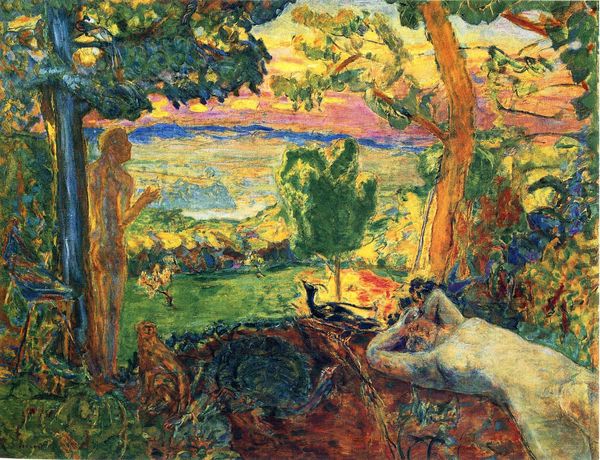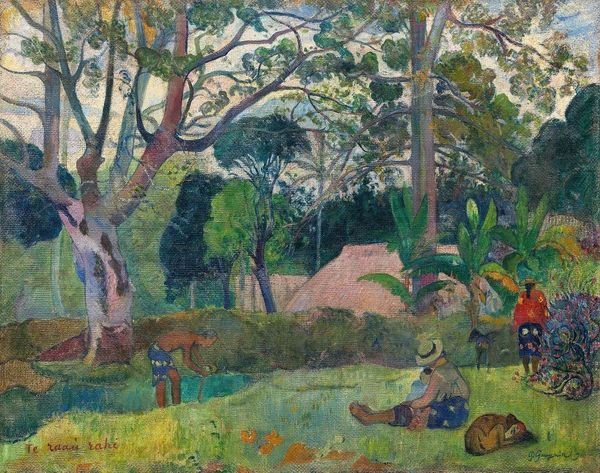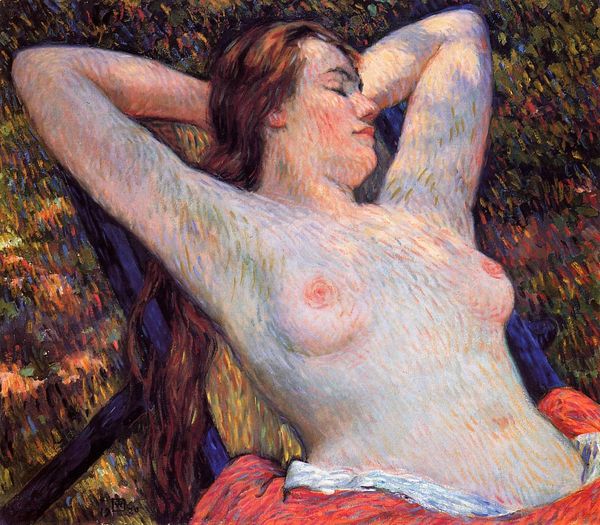
divisionism, painting, plein-air, impasto
#
divisionism
#
tree
#
mother nature
#
painting
#
impressionist painting style
#
plein-air
#
neo-impressionism
#
landscape
#
impressionist landscape
#
figuration
#
impasto
#
female-nude
#
fluid art
#
neo expressionist
#
forest
#
plant
#
post-impressionism
#
nude
Copyright: Public domain
Editor: This is "In the Shade of the Pines," painted in 1905 by Theo van Rysselberghe. I am struck by the dappled sunlight and how the figures almost blend into the landscape, especially with those divisionist brushstrokes. What do you make of this scene? Curator: The scene immediately brings to mind the late 19th century interest in portraying idealized figures within a natural setting. How does Rysselberghe both embrace and challenge academic traditions of the nude? Editor: I see the embrace through the classical posing, but the challenge… perhaps through the flattened perspective and the active brushwork which feels so modern and "un-academic?" Curator: Precisely. The setting and the figures’ relaxed poses convey a certain liberty, while the Pointillist technique distances itself from conventional realism. Does the seemingly casual depiction undermine traditional allegorical meanings, potentially shifting the viewer’s focus to the sheer visual experience of the piece? Editor: It really does! You made me think how academic painting traditionally aimed to instruct or inspire moralistically, and Rysselberghe seems to abandon this mission. The beauty and appeal of “In The Shade of The Pines” rest simply on the viewing experience. Curator: Yes, and perhaps this freedom mirrors shifts in societal values at the time, away from stringent social dogmas and toward the appreciation of leisure and individual experience. The landscape serves as both a backdrop and a reflection of such inclinations. Editor: It's interesting to consider that paintings like these helped pave the way for later rejections of tradition! This makes me realize I previously underestimated its social and cultural significance. Curator: It’s important to appreciate how a work simultaneously adopts from and deviates from existing paradigms to push against boundaries, artistically and culturally.
Comments
No comments
Be the first to comment and join the conversation on the ultimate creative platform.
